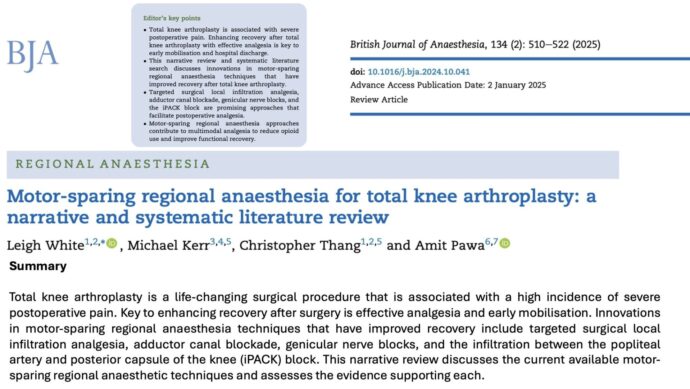
Cancer-Associated Coagulopathy
With cancer rates steadily rising and patient survival improving thanks to advanced therapies, anesthesiologists increasingly encounter patients with cancer-related coagulation disorders in the surgical setting. These patients face an elevated risk of both thrombotic and hemorrhagic complications, necessitating a detailed understanding of coagulopathy mechanisms and tailored perioperative strategies.
A review by Deshpande et al. breaks down the complex interplay between malignancy and coagulation.
Epidemiology highlights
- 7–11x increase in venous thromboembolism (VTE) risk in cancer patients.
- 3x higher rate of fatal pulmonary embolism (PE) compared to non-cancer patients.
- Certain malignancies (pancreatic, lung, ovarian) show particularly high VTE risk.
- Hematologic malignancies pose the highest bleeding risk (30% incidence).
- Disseminated intravascular coagulation (DIC) occurs in up to:
- 10% of solid tumors
- 20% of hematologic cancers
Mechanisms
- Tissue Factor (TF) overexpression: Activates the extrinsic coagulation pathway.
- Microparticles (MPs): Released by tumor and blood cells; rich in TF and procoagulant phospholipids.
- Neutrophil Extracellular Traps (NETs): Trigger clot formation and platelet aggregation.
- Hypoxia and HIF-1α activation: Promotes endothelial damage and TF upregulation.
- VEGF overproduction leads to angiogenesis and vascular fragility.
Clinical manifestations
Thrombotic disorders
- VTE: DVT, PE, upper extremity thrombosis (esp. with central lines).
- Arterial thrombosis: Stroke, myocardial infarction; linked to myeloproliferative neoplasms.
- TMA: Hemolytic anemia, thrombocytopenia, renal dysfunction.
- Veno-Occlusive Disease (VOD): Post-transplant liver failure.
- Nonbacterial Thrombotic Endocarditis (NBTE): Valvular vegetations with systemic emboli.
Bleeding disorders
- DIC: Dual presentation of thrombosis and bleeding.
- Thrombocytopenia: Due to chemotherapy, marrow infiltration, or DIC.
- Acquired von Willebrand disease: Especially in hematologic cancers.
- Drug-induced platelet dysfunction: Seen with ibrutinib, anti-VEGF therapies.
Preoperative management
Preoperative evaluation checklist
- Assess cancer type and stage.
- Review treatment history: chemotherapy, radiation, immunotherapies.
- Check coagulation labs:
- Platelet count
- PT/INR, PTT
- D-dimer
- Viscoelastic testing (TEG or ROTEM)
- Evaluate functional status and comorbidities.
Risk stratify with RAMs (Risk Assessment Models):
- Khorana Score
- Caprini RAM (for surgical patients)
- COMPASS-CAT (for ambulatory cancer patients)
Anticoagulation strategy
- Discontinue DOACs (direct oral anticoagulants) 2–3 days before surgery (longer if renal function is impaired).
- Bridging with LMWH (low molecular weight heparin) may be required.
- Avoid regional anesthesia unless coagulation status is corrected per ASRA (American Society of Regional Anesthesia) guidelines.
Intraoperative management
Best practices
- Monitor with TEG/ROTEM to assess clotting efficiency.
- Prepare for:
- Platelet transfusion
- Cryoprecipitate (for low fibrinogen levels)
- Low-dose Prothrombin Complex Concentrates (PCCs)
- Use leukocyte-reduced or irradiated blood products in immunocompromised patients.
Emergencies to watch for
- DIC (Disseminated Intravascular Coagulation): Treat with targeted transfusions, fibrinogen concentrate, and PCCs.
- Acute PE (Pulmonary Embolism) or MI (Myocardial Infarction): Use intraoperative TEE (transesophageal echocardiography); consider ECMO or thrombectomy if indicated.
Postoperative management
Guidelines
- Begin pharmacologic thromboprophylaxis once bleeding is controlled.
- Continue thromboprophylaxis for 4 weeks postoperatively in high-risk patients (e.g., those undergoing major pelvic or abdominal surgeries).
- Combine mechanical and pharmacologic methods when possible.
Duration of VTE prophylaxis
Score 5–8 (Moderate risk):
- Continue VTE prophylaxis for 10 days after surgery.
- These patients have sufficient risk to warrant extended prophylaxis beyond the immediate hospital stay.
Score ≥ 9 (High risk):
- Continue VTE prophylaxis for 30 days postoperatively.
- These patients have significantly elevated risk and benefit from prolonged prevention strategies.

Impact of common chemotherapeutic agents on coagulation and hemostatic risk

Final thoughts
Cancer-associated coagulopathy is multifactorial, dynamic, and highly individualized. With a rapidly evolving therapeutic landscape and aging patient population, perioperative teams—especially anesthesiologists—must remain vigilant and proactive in managing bleeding and thrombotic risks.
Collaborative, evidence-based protocols and real-time assessment tools like ROTEM/TEG are essential to improving outcomes in this vulnerable population.
For more information on this topic, check out Anesthesia Updates on the NYSORA Anesthesia Assistant App.
Get access to step-by-step management algorithms, the latest research, and peer-reviewed insights—all in one place. Download the app today and experience the future of anesthesia education and decision-making.




